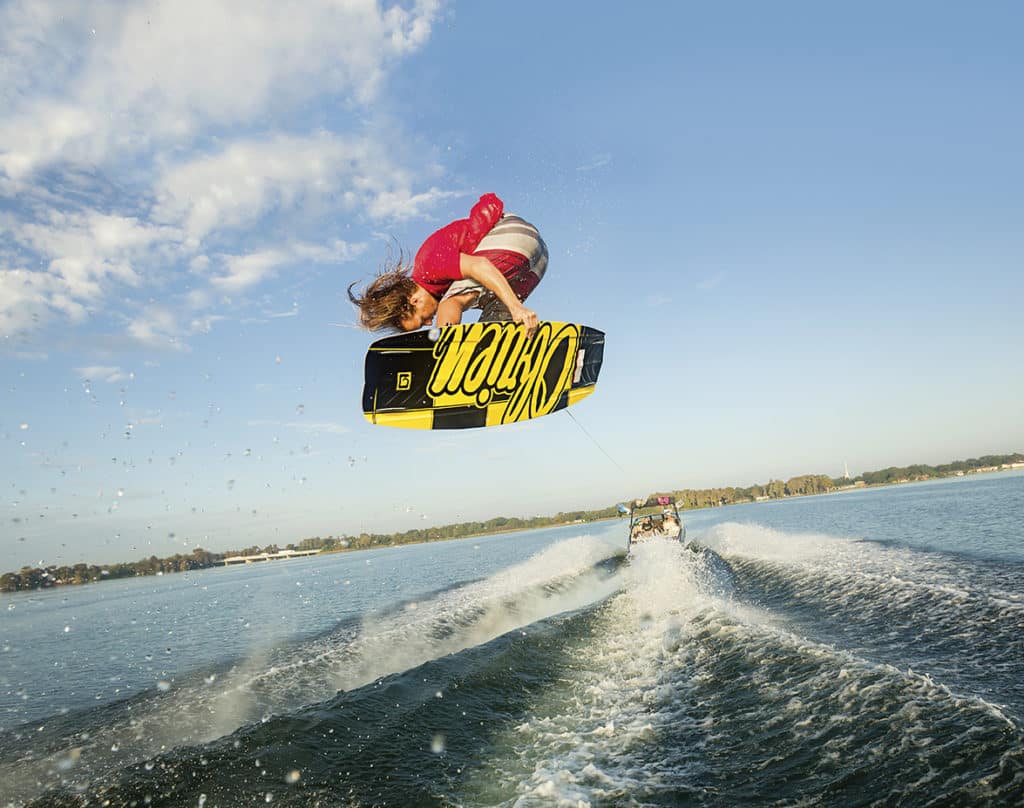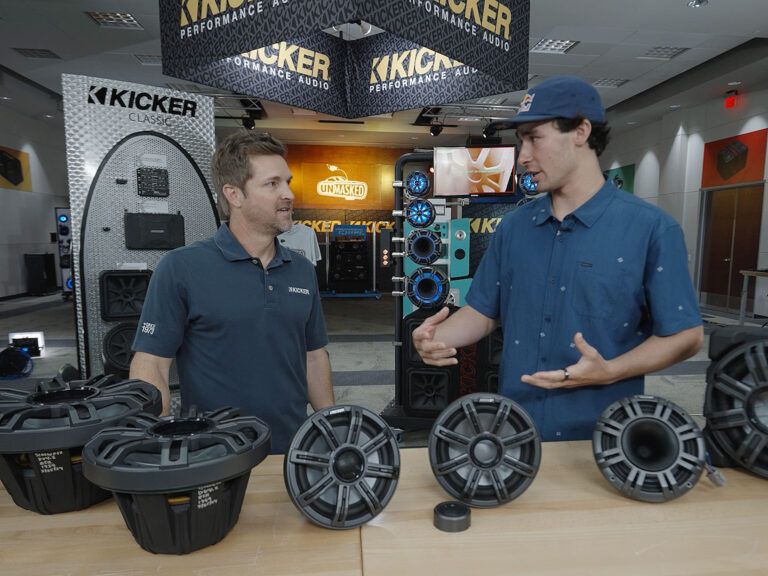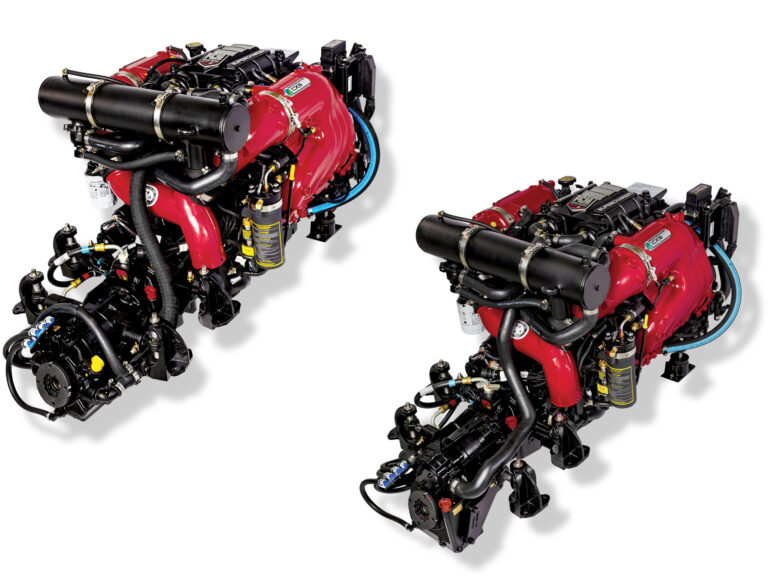
If you’re a boat rider looking for a consistent, trustworthy ride, the 2016 O’Brien Rome should be on your list to demo this spring. This shape is the second generation of Jeff Langley’s signature boards with O’Brien, following the popular Bruce model in 2014-2015. As with all Editor’s Picks, we got out on the water — this time with Langlestein himself — to ask questions, analyze, dissect, measure, corroborate and document our experience. In other words, we went out for a rip on a glassy day in Orlando and had fun.
As you break the surface of the water, the Rome is instantly shred-ready. It’s not one of those shapes that take getting used to, like many experimental shapes on the market today. I also believe in the performance of a center spine for boat boards, as featured on the Rome and Bruce, because I know from experience that it helps soften landings, especially in the flats.
Surprisingly, at 5 feet 9 inches and 150 pounds, Jeff rides the 143 instead of the 138. Larger boards land softer but typically include more swing weight. However, the Rome still feels light thanks to Feather Core foam technology. At 6 foot 1 and 190 pounds, I also felt comfortable on the board, which shows great versatility in this shape.
Other changes from the Bruce include a wider profile (17.4 inches), a more squared-off nose and tail, and an increase in rocker. Don’t let “five-stage rocker” confuse you. At a glance, the Rome’s profile looks like a continuous rocker line (which is traditionally known for consistency), but it’s actually flatter between your boots for more lift off the wake. Three-stage boards are generally slower on the water, so the goal was to find the perfect ratio of glide speed and pop. As I was riding, I didn’t notice any sign of drag, and I definitely felt a good pop off the wake.
The Rome’s glide speed is further accentuated by O’Brien’s Delta Base, which features an angled pattern at the nose and tail to break the surface of the water. Similar to dimples on a golf ball, this feature is designed to mimic a stone skipping off the water for a “fast, effortless approach into the wake.” I can’t validate that statement without trying the same shape without a Delta Base, but watching Langley ride, I could see that his approach is one of the smoothest in the game today, so if it works for him, it’ll work for you.
| Specs | |
|---|---|
| Durability: | Moderate |
| Core: | Foam |
| Edge Type: | Variable bevel |
| Profile: | Moderate |
| Overall Weight: | Light |
| Swing Weight: | Light |
| Performance | |
|---|---|
| Glide Speed: | Average |
| Edging: | Responsive |
| Belly Flex: | Medium-stiff |
| Nose Flex: | Medium-stiff |
| Rocker Type: | Five-stage |
| Amount of Rocker: | High (2.4″) |







